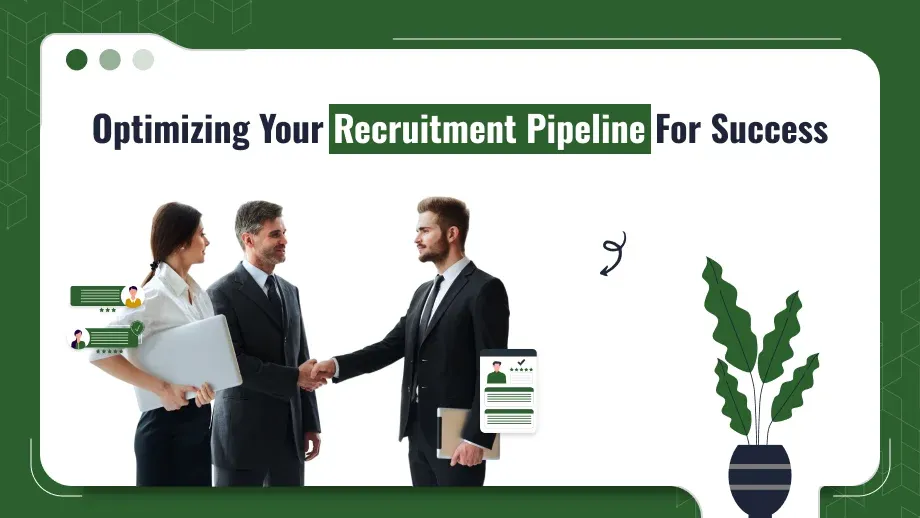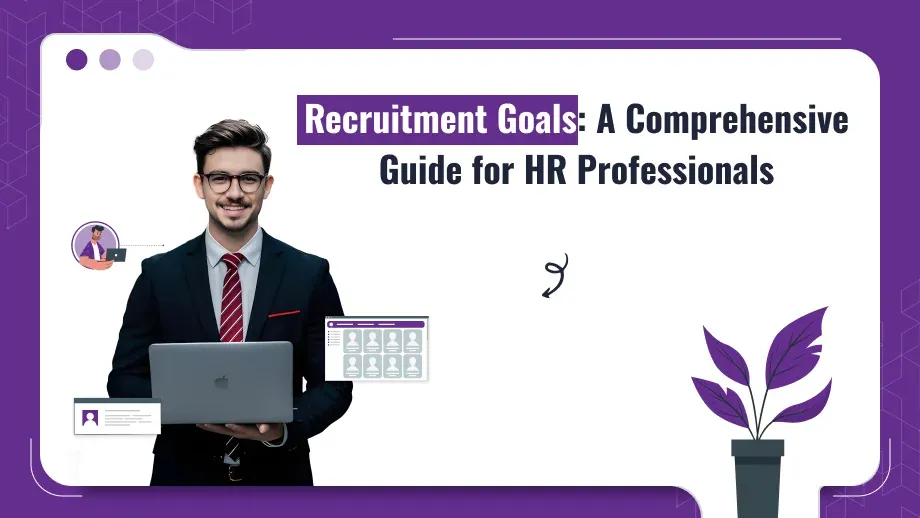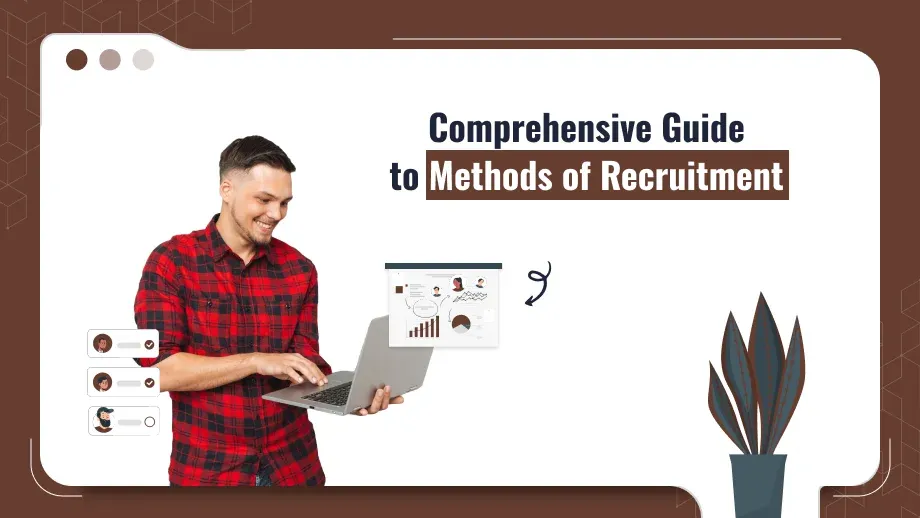
In today’s competitive job market, the recruitment Pipeline is crucial in attracting and retaining the most talented talents. It’s an organized method to manage the complete method of recruiting, from utility up to induction. A good recruiting process will increase the efficiency of hiring and enhance the overall experience of candidates improving retention rates and a more positive corporate culture.
In this article we’ll look at the middle of an effective recruitment Pipeline How to build one, the most common pitfalls, and how research and recruitment records can aid in recruitment.
What is a Recruitment Pipeline?
A Pipeline in Recruitment Pipeline is the procedure of managing candidates through the hiring process. It encompasses all phases of the process from initial sourcing through onboarding. The meaning of a pipeline in recruiting is a defined framework that allows HR personnel to make their jobs easier and to follow a uniform method of hiring.
This encapsulates the various elements that comprise effective recruiting, sourcing candidates, screening as well as onboarding. Knowing these components can help organizations create a recruiting process that is able to meet their hiring requirements. Additionally, HR departments can improve the relationship with candidates and ensure a pleasant experience for all candidates.
Stages of a Recruitment Pipeline
Sourcing:
This is the first stage where candidates are found through various channels, job boards, social media, and networking events. Using Talent Acquisition Software can help with sourcing by automating tasks and tracking candidates. Sourcing should be both active and passive to widen the talent pool.
Screening:
After sourcing the next stage is screening. This is where resumes are evaluated and preliminary assessments are done to determine which candidate pipelines go to the interview stage. A good pipeline recruitment strategy means only qualified candidates progress. Using AI-driven tools for resume screening can save time and reduce bias in the selection process.
Interviewing:
The resume is analyzed and pre-assessments are conducted to determine which candidates’ pipelines are invited to the interview phase. A good pipeline-based recruitment method ensures only candidates who are qualified progress. Using AI-driven tools for screening resumes can reduce time and bias in the process of selecting.
Assessment:
The resume is analyzed and pre-assessments are conducted to determine which candidates’ pipelines are invited to the interview phase. A good pipeline-based recruitment method ensures only candidates who are qualified progress. Using AI-driven tools for screening resumes can reduce time and bias in the process of selecting.
Offer Management:
After finding suitable candidates, HR teams then move into the management phase where offers for competition are created and negotiation takes place. Transparency at this point will build trust and ensure that everyone is on the same page.
Onboarding:
The final step part of the Recruitment Pipeline is onboarding, where new employees are incorporated into the company. A smooth onboarding process is the basis for the long-term success of employees. Making use of technology during onboarding can help make it more enjoyable and educational.
Make sure you’re not leaving your recruitment to chance!
Your recruitment pipeline can be optimized and hiring outcomes can be improved.
How to Build a Recruitment Pipeline
Talent Pooling:
The business should concentrate on establishing an employee pool of talent by creating an applicant database. This proactive method will allow faster access to candidates who are qualified when the need for hiring arises. An updated database is an excellent resource for the future of recruitment.
Proactive Sourcing:
Engaging with passive candidates is crucial to creating a solid pipeline for recruitment. Using tools within an online recruitment system can help with proactive outreach. Social events, networking events, as well as employee referrals can assist in attracting passive candidates.
Data-Driven Decisions:
Data analytics can help HR managers make informed choices during the process of recruiting. Data can provide insight into trends and aid in making improvements within the pipeline. For example, keeping track of drop-off rates for candidates will reveal areas that require focus.
Technology Integration:
The implementation of Applicant Tracking Systems (ATS) helps in the management of candidates and the monitoring of applicants throughout the stages of the application process. Integrating ATS with other tools, such as HRMS Payroll Software in India will improve the accuracy of data and provide better reporting.
Collaboration:
The HR department should encourage collaboration with management for ensuring alignment to the organizational goals and objectives to help make the recruitment Strategy more efficient. regular meetings with departmental and HR heads will provide valuable insight on the specific requirements for hiring.
Benefits of a Recruitment Pipeline
Clear Communication:
A well-planned Recruitment Pipeline will ensure open and transparent communication between HR personnel the hiring manager, HR teams, and applicants. regular updates, as well as transparency, minimize the possibility of communication errors.
Candidate Engagement:
A carefully planned pipeline keeps applicants engaged throughout the entire recruitment course. By providing immediate comments and personalized interactions organizations can enhance the experience for candidates and inspire top talent to remain engaged in the opportunities.
Diversity Hiring:
Through sourcing candidates with different backgrounds, businesses can develop their pipeline of recruitment to promote diversity and inclusiveness. A diverse workforce can bring new perspectives and create creativity within the organization.
Data-Driven Decisions:
A pipeline for recruitment lets companies collect and analyze data regarding different aspects of the candidate’s profile, such as demographics sources, sourcing channels, and hiring results. This data will inform future strategies for recruitment and assist HR leaders in making decisions that align with organizational goals.
Cost Savings:
Optimized recruitment could yield significant cost reductions by reducing the time and effort spent recruiting. Streamlined processes eliminate the need for outside recruitment companies and can reduce the costs per employee.
Predictable Hiring:
With an organized pipeline, companies can anticipate the need for hiring and prepare in line with their needs. This predictability assists in workforce planning and enables HR departments to effectively allocate resources and to fill crucial roles swiftly.
Flexibility and Scalability:
A well-functioning pipeline can adapt to changes in business requirements. Whether scaling up to accommodate growth or adapting to changes in economic conditions, companies can alter their pipelines in response to market trends and efficiently manage manage recruiting pipeline.
Hiring Manager Satisfaction:
If the recruitment process is efficient and applicants are prepared, hiring managers are more content about the caliber of their hires. A well-managed pipeline makes sure that hiring managers receive candidates that meet their particular needs, and also facilitates better communication between departmental and HR teams.
Retention of Top Talent:
A positive experience for candidates throughout the hiring process can result in more levels of retention. When candidates are reassured and valued during the process of hiring They tend to remain in the company for a long time.
Clear Career Progression:
A successful pipeline allows companies to provide clear career options to prospective employees. By outlining the opportunities for growth and development companies can draw in people who are ambitious and looking for future career opportunities that last for a long time.
Cultural Fit Assessment:
A pipeline in the recruitment process allows employers to evaluate applicants not only for their abilities and qualifications but also for cultural compatibility. Through incorporating assessments that assess the alignment with corporate values, businesses can form teams that are cohesive and supportive of the company’s culture.
Common Challenges in Recruitment Pipelines & How to Overcome Them
- Unqualified Candidates: One of the common issues is unqualified candidates. This can waste time and resources. To address this issue, improve the job description and employ screening tools to draw people with the correct skills. It is important to clearly define the job’s requirements and the desired skills to eliminate candidates who are not suitable early throughout the hiring procedure.
- Long Hiring Cycles: Long processes for hiring can turn the best candidates. To reduce this risk, businesses could streamline their hiring process through the automation of repetitive tasks. Create clear deadlines for each step of the process to keep applicants engaged.
- Low Engagement Rates: Candidates could be disengaged during the process of hiring due to insufficient communications. Make sure that communication lines are open and keep up-to-date with updates to improve the experience of candidates. Make sure that your communications are personalized to help people feel respected.
- Role of Data Analytics: The role of data analytics is to use it to pinpoint bottlenecks within the recruitment process and to make data-driven choices regarding enhancements. Examine the key indicators of performance (KPIs) often to uncover patterns and issues to concentrate on.
The Role of Data & Metrics in Optimizing the Recruitment Pipeline
- Time to Hire: This metric helps organizations see how quickly they can fill roles, which is critical for operational efficiency. Review the duration of every stage of the pipeline, to find the gaps and then take appropriate action.
- Cost Per Hire: Track the recruitment expenses to see how the budget is being used. Know the breakdown of cost for a better understanding of the budget, and make informed choices.
- Quality of Hire: Examine the new hires’ performance in order to enhance the hiring process and increase overall employee talent. Perform performance reviews and monitor the success of employees to gauge how effective the hiring process is.
- Strategic Insights for Leadership: CHROs as well as CEOs may employ these measures to make informed decisions about the planning of the workforce and long-term strategy. Data-driven insight can be used to aid in an active planning process and align with the business objectives.
Align Your Recruitment Pipeline to Company Culture and Long-Term Goals
- Employee Alignment: A well-designed pipeline attracts employees who are in line with the company’s ethics and culture, which means that it is easier for the employees to work together. Focus on the culture during the hiring process in order to ensure an environment that is more positive.
- Long-Term Strategies: Businesses need to think about succession plans and ensure that their pipeline candidates are aligned with future requirements. Find talent within the organization to build the company and ensure continuity in important areas.
- Businesses grow and can adapt. Flexible pipelines allow companies to adjust to the changing market conditions while achieving the goals they set. Check the pipeline frequently to ensure that you are ahead of the latest trends in your industry.
Using Technology to Simplify the Recruitment Pipeline
- AI and Chatbots: Implement AI and chatbots to improve candidate interactions and streamline initial screening processes. They can help answer commonly asked concerns, arrange interviews, and offer feedback, so HR personnel can focus on the strategic work.
- ATS Integrations: Use various technology solutions including Applicant Tracking Systems to optimize the overall recruiting pipeline. ATS tracks interactions between candidates as well as manages resumes. It also facilitates communications between hiring managers as well as applicants.
- Data Management Systems: A strong talent database is vital to ensure effective talent management. It also assists Talent Acquisition Software initiatives. Cloud-based solutions can enhance the collaboration of HR teams and provide access to data to HR personnel.
Summary
So, in summary, you should optimize your recruitment Pipeline to ensure you retain the top potential employees. Learn the steps, utilize technologies, and continuously improve your process to ensure that it can be aligned with business goals. HR managers must act immediately to create a recruiting pipeline that is scalable and able to adjust to the changing needs of the market.





